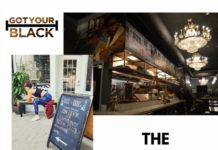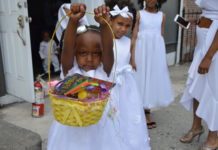In the summer of 2014 I went on my first solo trip backpacking around Europe. I visited cities I had only seen in my dreams, ate the authentic versions of foods I’d attempted to replicate in my kitchen, and met strangers who would teach me more about myself than I might have learned back home. Visiting a new country with a loved one was one thing, but traveling solo allowed me to decide how I wanted to explore, what I wanted to see and with whom. It required me to rely on my own instincts for safety while finding my way in a foreign place. At the time I didn’t realized it but I created memories that would shape the way I navigate the world

Thanks to my mama, travel has always been a part of my life, but it was on that journey that I realized I needed to make it my lifestyle. I returned home with an intense wanderlust and in extreme bout of post-travel depression. All of a sudden the things I loved about my life (living in Brooklyn, my “exciting” entertainment industry job, even food) all seemed mundane. I liked to think of myself as a person that is naturally enthusiastic about life. But here I was unable to evoke that innate passion unless the topic was travel-related, Black-related or more specifically the Black Lives Matter movement.

My return home immediately following the murder of Mike Brown, his name added to the list of Black men and women who lost their lives at the hands of police brutality. I felt helpless. My mood went up and down with every news report. I felt like my actions weren’t making an impact, nor was my job, and I wasn’t rich so I couldn’t just escape by going abroad again. I questioned everything about my life. Had I dedicated myself to an unfulfilling career? Was there anything I could do that could make a difference? How could I contribute in a way that would fulfill me instead of consume me? It had been about year since I’d decided to focus my college electives strictly on Africana studies and I’d just begun to explore what being Black meant to my identity. The famous James Baldwin quote – “to be a Negro in this country and to be relatively conscious is to be in a rage almost all the time” – never resonated so deeply. I was starting to understand the nuance of what it means to be Black in America.
A few months went by and the grand jury announced that no indictment would be charged to the cop that killed Eric Garner. Like many others the decision left me feeling powerless. Watching television felt like emotional suicide as did scrolling on Instagram. With each death I was confronted with the fact that for having a Black body my life could be taken from me at any moment. If death was inevitable then I needed I find a way to feel alive while possible. But how? My work still didn’t place Black folk in the center, and I still wasn’t traveling. I needed to find a way to combine my passions, so that I could do something meaningful.
While the protest raged following the jury’s decision, I found myself cathartically drawing in an art studio. Inspired by an Afro-latinx course I was taken, I created what I would describe as a mola-inspired Black power fist. I fused Panamanian culture with the political symbol to make a connection between myself and other Black people who often feel hopeless in a world rampant with systemic racism. I, an Afro-Latina born in the US, knew that anti-Blackness wasn’t just an American thing but truly a global phenomenon. What happen to Mike Brown and Eric Garner could easily happen to a brother or sister in Panama, the Dominican Republic, or Haiti. By using art to connect my identity to an experience common throughout the diaspora, I had finally figured out how to merge my love for my people with my love of travel. I would explore Blackness globally. Not just the injustices that plague our communities but the cultural that makers that define us where we are in the world. It took me a while, but I figured out how I could potentially make a difference. I found the words to show my support for Black folk everywhere. I got your back… I Got Your Black.








